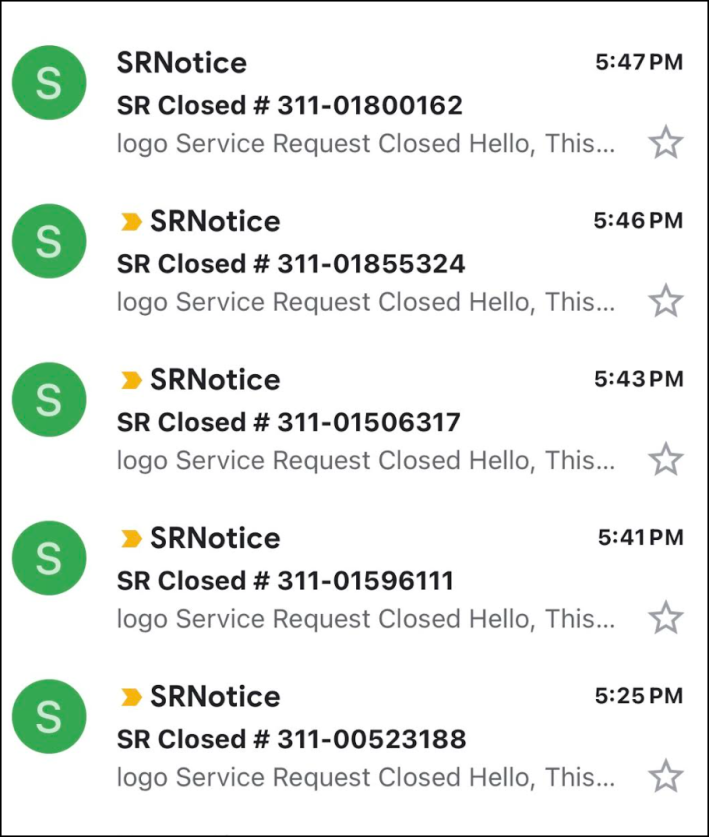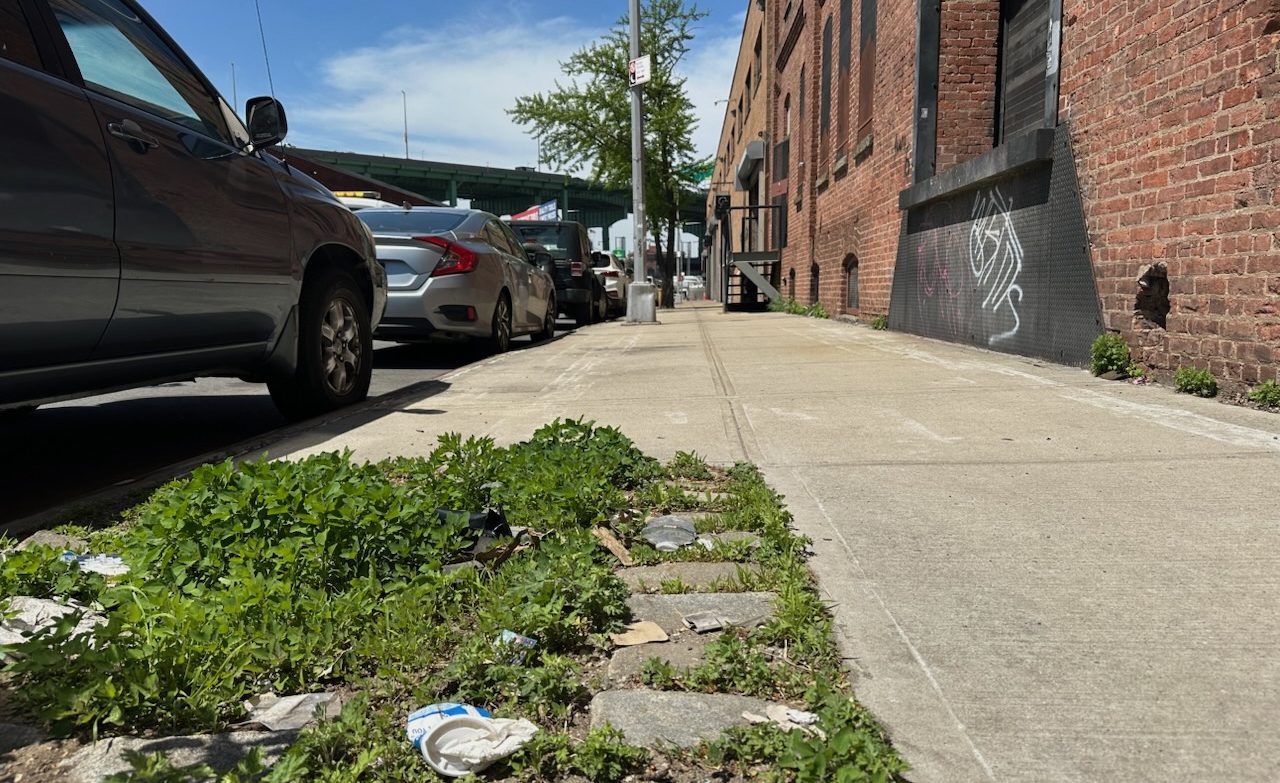Brad Vogel has filed hundreds of requests for new street tree plantings over the past years, which only required him to send a picture and address of the location to 311.
Even though just a few new plantings ever materialized from his asks, the canoeist and poet from the Gowanus section of Brooklyn was hopeful about the Bloomberg-era initiative that allowed everyday New Yorkers ask for a new tree via the city's non-emergency services line, rather than having to bother a Council member or the Parks Department.
"It really democratizes the ability to grow the city’s tree canopy," Vogel told Streetsblog.
But last week — on Earth Day, no less! — Parks closed out nearly two dozen of his applications, some from as long ago as 2019, and told him that the agency was done taking citizen tree applications.
"NYC Parks is no longer accepting new tree planting requests," read the 311 closing notices.

The under-the-radar change is part of a larger shift at the supposedly green agency to take back control over where it plants trees by focusing its thin resources on specific zones instead of responding to public requests.
But Vogel and other tree huggers objected to sawing off the crowd-sourced portion.
"A grass-roots track of this urban forest plan effort is critical," Vogel said. "If you’re going to move the needle in a city of this size … you’re going to need all hands on deck."
Zoned out
New Yorkers have been able to file street tree requests through 311 since late 2000s, according to news clips from the time. At the time, the dial-a-tree initiative was part of then-Mayor Bloomberg's goal of planting one million trees in the five boroughs.
Parks officials boasted that they were fielding tens of thousands of requests and planting record numbers of trees, focusing on in-need neighborhoods, because "it’s as easy as 311," according to 2008 testimony by agency leaders to the City Council.
That policy went quietly into the wood chipper last fall, when Parks Commissioner Sue Donoghue announced that the agency would launch a new zone-based strategy for tree planting, focusing on heat-prone neighborhoods with little existing tree cover.
The agency noted that it had a backlog of more than 42,000 tree requests and wait times of up to seven years, according to the agency's press release — a release that did not specify that the call-in system would die as a result of the changes.
Vogel noticed that the request option disappeared from the 311 app and around December. A Streetsblog review of archived versions of the city's 311section on tree planting shows a similar timeline.
The resident-filing scheme had become so dysfunctional that the city offered well-heeled arbor adorers a chance to cut the line if they made a $1,800 donation to an agency-connected foundation, The City reported.
Under the agency's new strategy, officials divided each of the city's 59 community boards into several zones, totaling 400 citywide, that will get a more-comprehensive street tree service, including planting, removal of stumps, and other streetscape improvements — but only every nine years.
A senior agency official justified the switch at a recent Council oversight meeting, saying it would allow workers to cover the city more fairly, as opposed to focusing on spot requests in neighborhoods where civically engaged people flood the 311 system.
"Today, when you make a service request, ... it’s at least a year, if not more or longer," said First Deputy Commissioner Jennifer Greenfeld said at a March 20 hearing. "We don't feel comfortable with that approach where we're really just serving communities who know how to request trees and yet still cannot provide sort of predictable responses to even those people who are asking."
Lawmakers were unconvinced and tore into the policy, which they said will in effect make neighborhoods wait nearly a decade for improvements.
"What am I supposed to do, to look my constituents in Northern Greenpoint or South Williamsburg, or wherever that area is in the eye and tell them, I'm sorry, the Parks Department isn't gonna come by to plant a tree for nine years," said Council Member Lincoln Restler (D-Greenpoint). "For you to come out and try and tell my community members that you're going be there in nine years, they're going to scream at you."
No green, no green
Adams has consistently underfunded the Parks Department and broken his campaign promise of dedicating at least 1 percent of the city's budget to the agency.
Last year, the mayor allocated $618 million for Parks out of a $112.4 billion budget, or about half of a percent, and gutted an agency team dedicated to maintaining the Big Apple's urban forests, ahead of a series of disastrous fires in city parks amid a drought last fall.
The mayor did earmark $136 million to plant a tree in "every viable spot" in the most heat-vulnerable neighborhoods by the end of 2027 as part of the new strategy, which includes places like Williamsbridge int the Bronx, East Flatbush in Brooklyn, the Lower East Side in Manhattan, and Elmhurst in Queens.
Planting a tree in this town costs $3,110 on average, Donoghue told Council members in March, which is 12 percent cheaper than in 2022.
The overall pullback of tree-planting stems from Hizzoner's three years of budget ax-wielding, said Adam Ganser, executive director of New Yorkers for Parks.
"It is directly a response to the lack of capacity at the Parks Department, which is due to budget cuts and not having enough staff to respond to New Yorkers’ needs," Ganser told Streetsblog. "[Focusing on heat-prone neighborhoods] shouldn’t mean that community boards have to wait nine years to see this type of basic improvement in their neighborhoods."
The city's nearly 900,000 trees remove pollution and are an essential to combating rising heatwaves amid global climate change, while helping to counteract urban heat island effect.
On average, heat contributes to 580 premature deaths in New York each year, with hotspots in working class neighborhoods of color.
Vogel said the city should let locals help out, rather than send the entire grass-roots system to the chopping block.
"There’s this very obvious tree pit that could use a tree and six years later not only has there not been a tree planted, but you’re eliminating the possibility to request it," he said. "Let a thousand flowers bloom, let a thousand trees bloom too."






